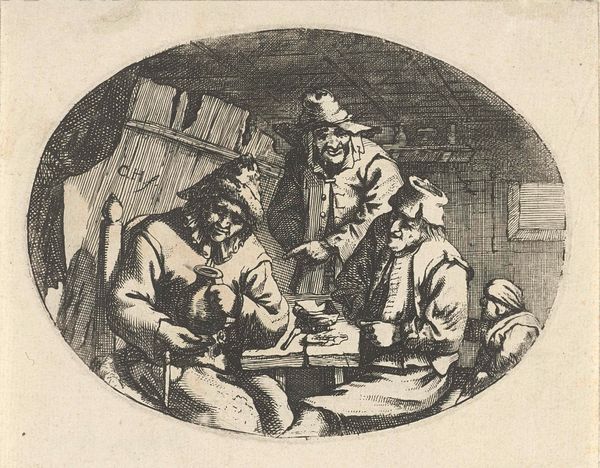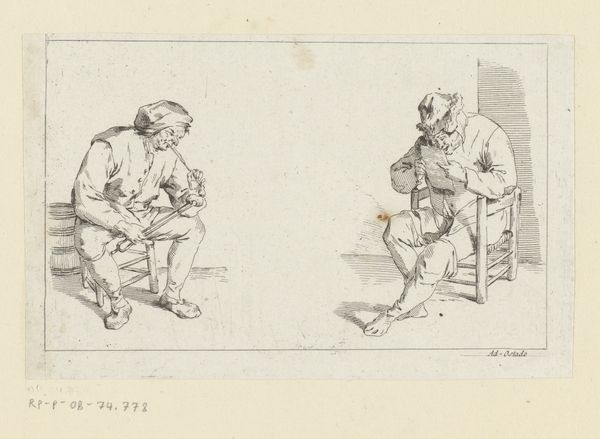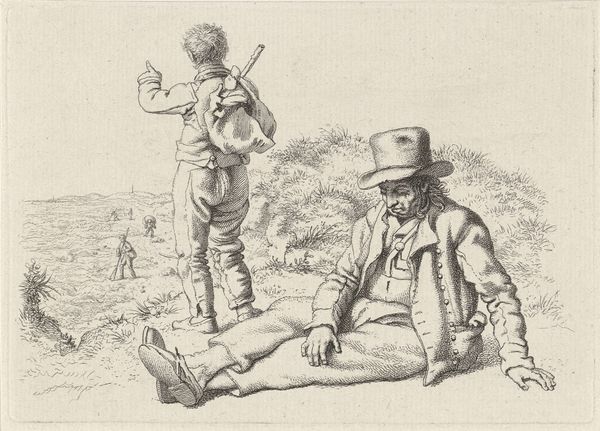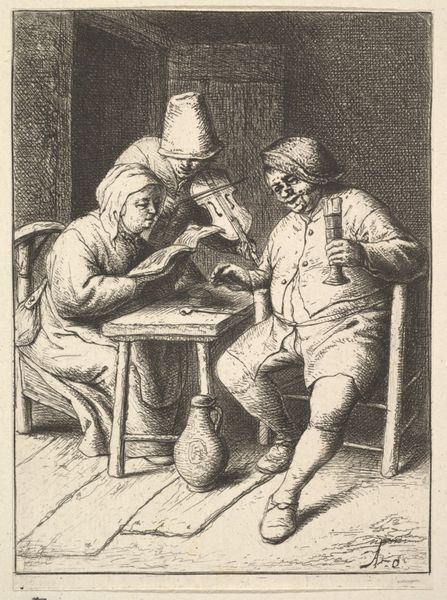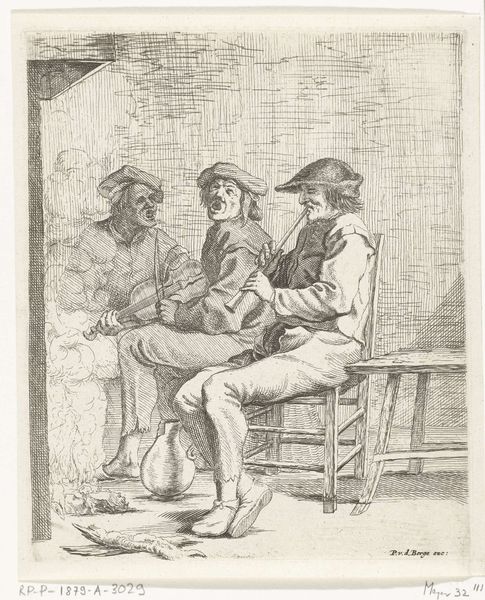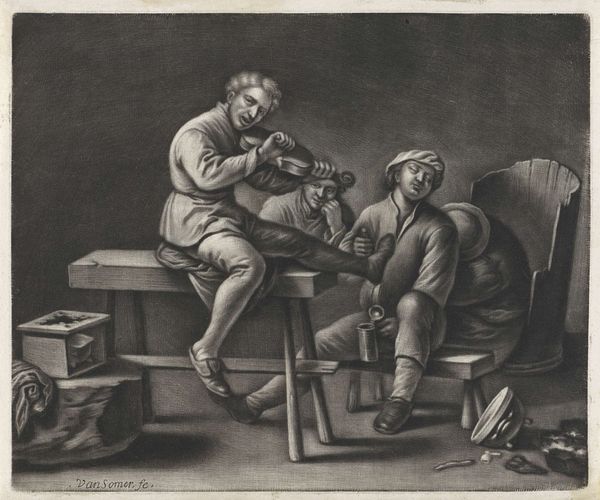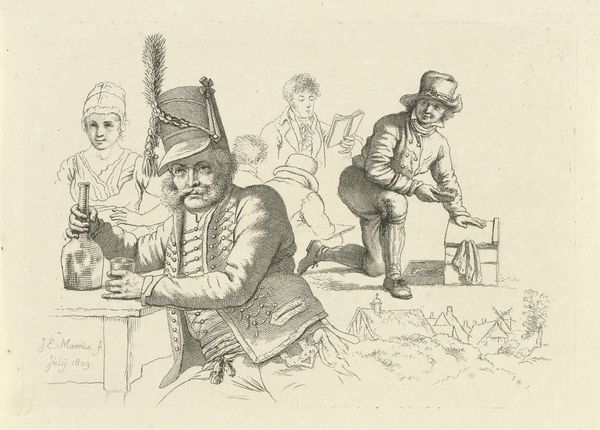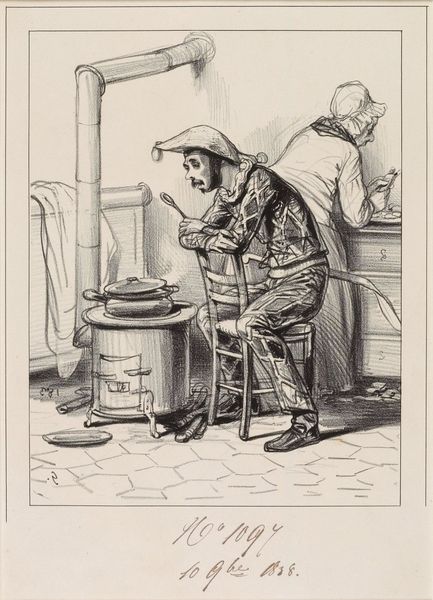
Studieblad met een vrouw aan een spinnewiel en een zittende man 1815 - 1818
0:00
0:00
drawing, pencil
#
portrait
#
pencil drawn
#
drawing
#
pencil sketch
#
figuration
#
romanticism
#
pencil
#
genre-painting
Dimensions: height 156 mm, width 246 mm
Copyright: Rijks Museum: Open Domain
Curator: Let's take a look at this drawing by Jacob Ernst Marcus, created between 1815 and 1818. It's titled "Studieblad met een vrouw aan een spinnewiel en een zittende man"—"Study sheet with a woman at a spinning wheel and a seated man." It’s currently held here at the Rijksmuseum. Editor: It strikes me as surprisingly intimate. It’s monochrome, a pencil sketch, but it evokes a quiet, domestic space. I am curious about the roughness of the rendering. Curator: Right, it’s quite interesting that it uses the medium of pencil to achieve this level of detail and capture what is essentially a genre scene, focusing on everyday life, yet with an element of portraiture. Consider the societal context; depictions of laboring women became quite popular, often romanticized, during this period. This allowed viewers from different societal echelons to see a version of working life. Editor: The labor itself, and the material aspect, is central, isn’t it? Look at the spinning wheel—the detail given to it speaks volumes. It wasn't just a tool; it represented the woman's livelihood and role in the household economy. It also reveals how things were made. Can you imagine how important clothes were for families that spun their own yarn? The value must have been different than now! Curator: Precisely. The figure of the man observing could also tell us something about power dynamics within the household, or broader socio-economic observations. The role of the male observer in the early 19th century is also key. Was it a family member, or was the artist depicting some other message about masculine roles at the time? The choice to portray the spinning woman as the central figure reflects emerging societal shifts. Editor: And it makes me wonder about Marcus' own relationship to craft and industry. As a draughtsman, was he documenting a disappearing tradition or celebrating its enduring importance? Pencil on paper allowed to transmit so much skill from the spinner to the viewer. It seems such a careful and valuable process on both sides! Curator: Well, by viewing art objects as reflections of both artist intentions and larger socio-political climates, we are allowed a better understanding of history and artistic expression. Editor: Indeed, it really makes you think about the skill that went into both the creation of yarn and the artistic representation thereof. Material labor, memorialized in this seemingly simple sketch!
Comments
No comments
Be the first to comment and join the conversation on the ultimate creative platform.
